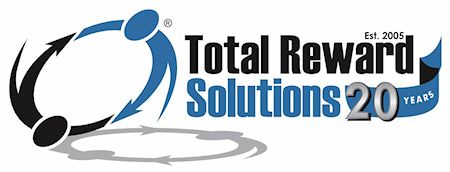March 10, 2018

An employee incentive plan can motivate and empower both employees and management. It can nurture teamwork. And most important, perhaps, at least for the company’s bottom line, is that it can boost productivity and profits. Yes, an employee incentive plan can accomplish all this and more IF it is well-designed – including appropriate employee performance goals and thoughtful metrics to measure plan success. Let’s take a closer look at these critical elements:
Setting Effective Goals for an Employee Incentive Plan
Obviously, goals are an essential part of any employee incentive plan. They must be strategically established and clearly communicated so employees can understand and strive to achieve them. Goals should be realistic but encourage employees to stretch and “raise the bar”. There should be a clear link between performance and pay. Also, the payout should be large enough to justify the effort required to achieve plan goals.
You will want to develop SMART goals. Sure, this acronym has been around forever, but it has stood the test of time because it simply makes sense. SMART goals are:
Specific in that they target specific areas for improvement
Measurable and quantifiable (or at least suggest an indicator of progress)
Achievable and specify who will do what
Realistic and state what results can reasonably be achieved, given available resources
Time-related, specifying when the result(s) can and must be achieved to qualify for plan payouts
To accurately assess performance relative to these goals, you’ll need to establish performance levels such as threshold, target, and maximum. Threshold performance levels, for example, should be attainable 80 to 90% of the time, while target performance levels should be attainable 50 to 60% of the time, and maximum performance goal attainment should be reached 10 to 20% of the time. While the level of payout awarded to performers at each of these levels can be difficult to calculate, the threshold is typically set at 80 to 90% of target performance, with maximum at 110 to 120%.
If employee incentive plan goals are not appropriate (that is, they are not SMART), there can be negative consequences. If goals are set too high, employees will not be motivated because they believe there is little chance of achieving the goals. If the goals are too easy and employees are consistently and easily achieving them, the wrong message is sent that superior performance is not necessary to receive a payout. Indeed, SMART goals, smartly designed, smartly implemented, and smartly managed, are the backbone of a successful employee incentive plan.
How to Determine if an Employee Incentive Plan is a Success
Behavior, attitudes and productivity all impact the bottom line. To make sure your employee incentive plan helps boost financial performance and profitability, begin with the end in mind, and build your plan so you can identify plan success. To do that, set up your plan to:
- Measure financial performance before, during and after incentive program cycles. Ask yourself this: Based on the numbers, can you clearly see whether your incentive program is delivering the expected return on investment? Keep in mind that many factors can impact short-term financial performance, including market factors beyond your control; so, don’t make knee-jerk changes to your plan unless those changes are clearly necessary to correct a plan deficiency.
- Zero in on key financial performance metrics. How did your program pay relative to sales or earnings? Did your company have low performance earnings yet pay high on incentive plan results? If the macro or big-picture view of reward-to-performance ratio seems off, consider making changes to the program.
- Look at results by department, but with an eye toward the bigger picture. Are individual team payouts in alignment with the performance of larger organizational units? If this micro view of reward-to-performance indicates problem areas, make sure that any resulting overall, or macro, program changes benefit the entire company.
- Be competitive within your industry or marketplace. Compare your incentive program payouts to other companies in your market. Be aware that if your plan is far below those of key competitors, you could lose top performers.
The Bottom Line:
If your company offers an employee incentive plan to reward employees for meeting performance goals, you are on your way to keeping employees engaged and motivated to deliver better bottom line results. But to make that happen, your plan must be designed to include SMART goals; and be set up to identify and measure what plan success looks like at departmental and overall company levels.
Designed, implemented and managed strategically, your employee incentive plan nurtures a win-win environment for your business and your employees. If not, however, your plan could frustrate employees and threaten your company’s profitability.
To learn more about how your company can create an employee incentive plan with SMART goals and a greater chance for success, contact us today at 317.589.8529.
Cassandra Faurote
About Total Reward Solutions:
Total Reward Solutions is your trusted partner for compensation and benefit services. Led by respected and professionally certified Human Resources expert Cassandra Faurote, Total Reward Solutions offers a broad range of compensation, benefits, performance management, and reward/recognition consulting services to help your organization attract top talent, motivate employees and retain top performers. We can partner with you on a project basis, on retainer, or as your total outsourced solutions provider for compensation services.
Call us today at 317.589.8529 to discuss how we can help your organization develop and implement competitive and effective compensation and total reward programs.
